ICP-MS Interface Cones: Maintaining the Critical Interface between the Mass Spectrometer and the Plasma Discharge to Optimize Performance and Maximize Instrument Productivity
Spectroscopy
A detailed look at the most critical component of an ICP-MS instrument: the interface cones
This month's "Atomic Perspectives" column takes a look at interface cones in inductively coupled plasma–mass spectrometry (ICP-MS), which are probably the most critical components of the entire ICP-MS system. The interface region gave the early pioneers of the technique the most problems to overcome. Although we take all the benefits of ICP-MS for granted, the process of taking a liquid sample, generating an aerosol that is suitable for ionization in the plasma, and then sampling a representative number of analyte ions, transporting them through the interface, focusing them via the ion optics into the mass spectrometer for separation and detection, is not a trivial task. Each part of the journey has its own unique problems to overcome, but probably the most challenging is the extraction of the ions from the plasma into the mass spectrometer. This article therefore focuses on how best to maintain the interface region and in particular, understanding when the sampler and skimmer cones need to be cleaned or changed to optimize performance and maximize instrument uptime.
The role of the interface region in inductively coupled plasma–mass spectrometry, which is shown circled in Figure 1, is to transport the ions efficiently, consistently, and with electrical integrity from the plasma, which is at atmospheric pressure (760 torr), to the mass spectrometer analyzer region at approximately 10-6 torr (1,2).
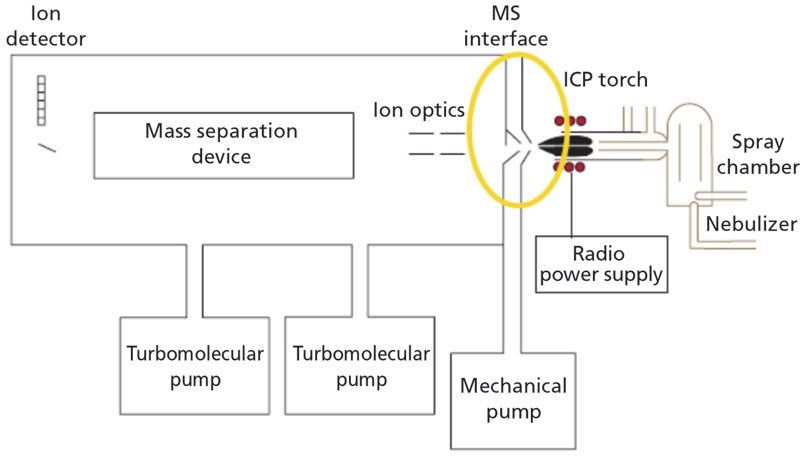
Figure 1: The interface region (circled in yellow) of an ICP-MS instrument.
This is first achieved by directing the ions into the interface region. The interface consists of two or three metallic cones (depending on the design) with very small orifices, which are maintained at a vacuum of ~1–2 torr with a mechanical roughing pump. After the ions are generated in the plasma, they pass into the first cone, known as the sampler cone. From there, they travel a short distance to the skimmer cone, which is generally smaller and more pointed than the sampler cone, and typically has a much smaller orifice. In some designs, there is a third cone called the hyper skimmer cone, which is used to reduce the vacuum in smaller steps and provide less dispersion of the ion beam. Whether the system uses two cones or three, the cones are usually made of nickel (Ni) or copper (Cu), but can be made of other materials such as platinum (Pt), which is far more tolerant to corrosive liquids. To reduce the effects of high-temperature plasma on the cones, the interface housing is water cooled and made from a material that dissipates heat easily, such as Cu or aluminum. The ions then emerge from the skimmer cone, where they are directed through the ion optics and, finally, guided into the mass separation device. A more detailed view of the interface region is shown in Figure 2.
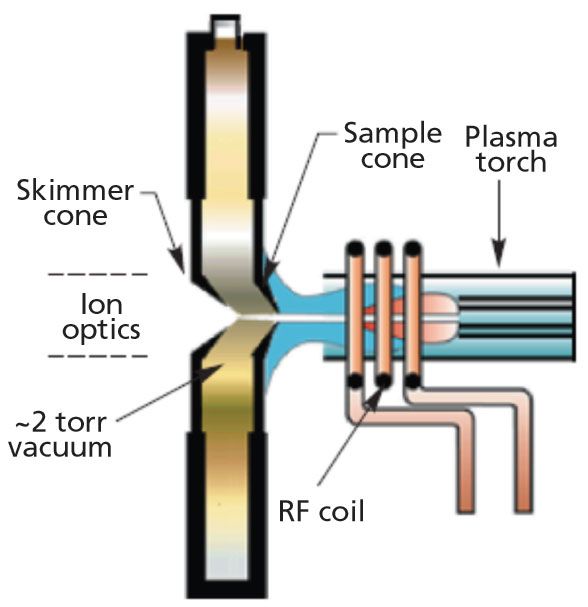
Figure 2: A more detailed view of the interface region for ICP-MS.
The Importance of Routine Maintenance of the Interface Cones
All sample and skimmer cones, regardless of ICP-MS manufacturer or design, serve the same function. They are the differential apertures separating the sample at atmosphere from the mass filter and detector(s) at high vacuum. Though the fundamental dimensions are all essentially the same (sample cone with shallow angle, skimmer cone with acute angle), each manufacturer has designed the cone's critical dimensions to their own unique specifications, based on the design of the mass spectrometer (including, but not limited to, orifice diameter, hole depth, and material composition). The actual cone design may vary significantly from one instrument manufacturer to another. The analytical zone, the area most in need of maintenance, displays the most significant differences. These differences, together with sample type (for example, ground water, soil digests, or sea water) contribute to the rate at which oxides and salts accumulate in and around the cone orifice. They also affect the rate of cone degradation, and influence the cleaning methodology. Ultimately, the quality of the data is the best diagnostic tool for determining when to clean or change the cones. However, if significant buildup on the cone is observed and appears to be occluding the cone orifice, cone removal and cleaning is warranted. All instrument manufacturers prescribe a daily routine to evaluate the status of the system prior to an analytical run. These fast and easy tests can also be used to qualitatively evaluate cone condition. Let's take a closer look at how to recognize when the cones are beginning to negatively impact instrument performance (3).
Clogging/Blocking: As oxides and salts build up around and within a cone orifice, they will change the gas flow dynamics and perhaps electrical characteristics of the cone interface. Symptoms may include reduced sensitivity and a degradation of signal stability. In severe cases, there may even be a change in signal response across the mass range due to pressure changes (higher vacuum) between the sample and skimmer cone.
Contamination: Like other components of the sample introduction system, sample cones are prone to certain memory effects, especially from elements like lithium, boron, and magnesium. This is particularly true when attempting trace analysis of elements that were previously in solution at high concentration. These effects may inhibit quality analysis well before visual buildup occurs around the analytical zone of the cones. In many, if not most, cases, memory effects are due to the sample introduction system (tubing, spray chamber, torch); therefore, thorough evaluation of all potential sources of memory effects should be carried out.
Cone Degradation: Whether from extensive use, improper use, aggressive matrices, or blunt force trauma, over time cones will degrade beyond acceptable limits. Careful handling and proper cleaning will typically enable about 500 h (several months) of operational use from each set of Ni cones and about 1500 h (18 months) from Pt cones. Some common symptoms of cone degradation are elevated oxide levels, doubly-charged species, and in severe cases, poor vacuum levels.
Platinum versus Nickel: Pt-tipped cones offer greater lifetime than Ni cones, and usually require less day-to-day maintenance. Aggressive matrices (high in oxidizing conditions) may require Pt-tipped cones. Unlike Ni cones, Pt-tipped cones can be cost-effectively refurbished. In addition, refurbishing processes can more than double the normal lifetime of Pt-tipped cones. Pt usually stays cleaner because it runs hotter, and has a tighter grain in structure than Ni. The tip can usually be reshaped several times. After extensive use, Pt (as well as Ni) will suffer from high temperature embrittlement, characterized by large grain crystals that will crack when the tip is being reformed. We strongly advise that users not try to mechanically alter the tip in any way, because the tolerances are tight and the shape is critical to good performance. Such alteration can lead to the unnecessary, early retirement of a good cone, which in the case of Pt, could be extremely expensive.
Cone Cleaning Procedures
Whenever possible, users should clean cones under mild, non-mechanical conditions. This is especially true for Pt cones, where accidental damage is very costly. However, with certain applications, a refractory buildup is inevitable, and will require mechanical cleaning. Following are three recommended cleaning methods. Choose the one that best suits your needs.
Note: An alternative to the more aggressive mechanical cleaning of Pt cones is to use a professional Pt cone refurbishing service, where the most severe refractory buildup can be removed and damaged Pt cones can be reshaped to their original specifications (5).
Light Cleaning–Detergent Method
The light cleaning-detergent method is recommended for cleaning cones where there is no severe buildup, and what little buildup exists is easily removed. It is primarily carried out to reduce elemental memory, and improve detection limits.
Note: It is worth emphasizing that today's cones are available in many different materials, including pure Ni, Pt, Al, and Cu, as well as varying combinations of these metals in the cone base and tip.
Ni and Pt-tipped Ni Cones
- Soak in 1:20 metal cleaner (such as Citranox) (4):H20 for 2 h (sonicate in an ultrasonic bath for last 15 min, if available).
- Rinse thoroughly with tap water.
- Soak in deionized H2O for 10 min (sonicate).
- Replace H2O, and repeat soak for 10 min (sonicate).
- Dry thoroughly using argon or nitrogen, if available.
Note: If using a bath sonicator (recommended), place cones in metal cleaner solution and sonicate for the final 15 min of the 2 h soaking period. Rinse thoroughly in tap water, then place in deionized H2O, and sonicate for 10 min. Replace deionized H2O and repeat. Dry with clean, dust free cloth, let air dry, and then finally blow dry with argon or nitrogen, or place in glassware oven (40-50 °C). Always take care not to place cone tips in a precarious position where they can fall or tip. For most sample cones, this is not a significant problem, because the base is large relative to the height. Skimmer cones, however, are more prone to tipping over and deforming, since they tend to have thinner walls and sharper edges.
Ni-tipped Cu and Pt-tipped Cu Cones
Cleaning cones with a Cu base requires a slightly modified technique so as not to unduly wear the Cu part of the cone, especially where it meets the Ni or Pt tip. Over time, metal cleaner will attack the Cu, and may degrade the weld between the two metals.
- Invert cone into a dilute metal cleaner solution, so that only the tip of the cone is immersed.
- Soak in 1:20 metal cleaner:H20 for 2 h (sonicate for last 15 min).
- Rinse thoroughly with tap water.
- Rinse thoroughly with deionized H2O (sonicate for 15 min).
- Replace H2O, and repeat rinse (sonicate for 15 min).
Note: Soaking and cleaning times may be modified, depending on need. The cone fixture, easily assembled from a spare cone container, enables more aggressive cleaning of the analytical zone without degrading the bimetallic weld. However, more exotic and functional fixtures would be advisable.
Standard Cleaning–Acid/Detergent Method
Mild accumulation of salts and oxides may build up around the analytical zone of your cones. Over time, this will affect the quality of your analyses. In this case, it is recommended that a slightly more aggressive cleaning protocol be used.
Ni and Pt-tipped Ni Cones
- Soak in 1:20 metal cleaner:H20 for 2 h (sonicate for last 15 min).
- Rinse thoroughly with tap water.
- Invert cone into fixture containing 2% HNO3, for 10 min.
- Wipe off residue with cotton swab, then rinse in tap water
- Return to cone fixture for 10 min.
- Rinse thoroughly with tap water.
- Rinse thoroughly with deionized H2O (sonicate for 15 min).
- Replace H2O, and repeat soaking/sonication.
- Dry with clean, dust free cloth, and then let air dry, blow dry with argon or nitrogen, or place in glassware oven (40-50 °C).
Ni-tipped Cu and Pt-tipped Cu Cones
Cleaning cones with a Cu base requires a slightly modified technique, so as not to unduly wear the Cu part of the cone, especially where it meets the Ni or Pt tip. Over time, metal cleaner and nitric acid will attack the Cu, and may degrade the weld between the two metals.
- Invert cone into fixture containing metal cleaner:H20 mixture.
- Soak in 1:20 metal cleaner:H20 for 2 h (sonicate for last 15 min).
- Rinse thoroughly with tap water.
- Invert cone into fixture containing 2% HNO3 for 10 min.
- Wipe off residue with cotton swab, then rinse in tap water.
- Return to cone fixture for 10 min.
- Rinse thoroughly with tap water.
- Rinse thoroughly with deionized H2O (sonicate for 15 min).
- Replace H2O, and repeat soaking/sonication.
- Dry with clean, dust free cloth, and then let air dry, blow dry with argon or nitrogen, or place in glassware oven (40-50 °C)
Note: If necessary, you may apply 5% HNO3 solution directly onto the Pt tip. It is recommended, however, that application be accomplished with an acid-soaked swab. This should be done with great care to ensure the Ni or Cu base is not in contact with acid, because it could become degraded.
Aggressive Cleaning– Mechanical Method
For all cones:
- Soak in 1:20 metal cleaner:H20 for 1 h (sonicate for last 15 min).
- Rinse thoroughly with tap water.
- Mix alumina powder with water to make a loose paste.
- Using a felt pad, apply paste to top side of cone, and clean with care.
- It is easier to clean the back side with a cotton swab.
- Rinse thoroughly with tap water.
- Soak in deionized H2O (sonicate for 15 min).
- Replace H2O, and repeat soaking/sonication.
- Dry with clean, dust free cloth and then let air dry, blow dry with argon or nitrogen, or place in glassware oven (40-50 °C).
Note: Rinsing thoroughly in a bath sonicator is advisable. This will ensure the removal of all residues accumulated during the mechanical cleaning process. You may choose to skip the metal cleaner step; however, this step will make the cleaning process easier, and so use of the cone fixture is optional. Diamond paste and special cleaning sticks are also available for enhanced polishing of the sample and skimmer orifice.
Some Real-World Examples
Typical Skimmer Cone with Oxide Buildup (Figure 3)
The recommendation for this type of scenario is to soak the cone in metal cleaner for a few hours, then sonicate for 15 min. If this does not remove all residues, follow the Aggressive Cleaning protocol. If metal cleaner and sonication sufficiently clean the cone, rinse thoroughly in tap water, and then deionized H2O. Dry according to previous instructions.
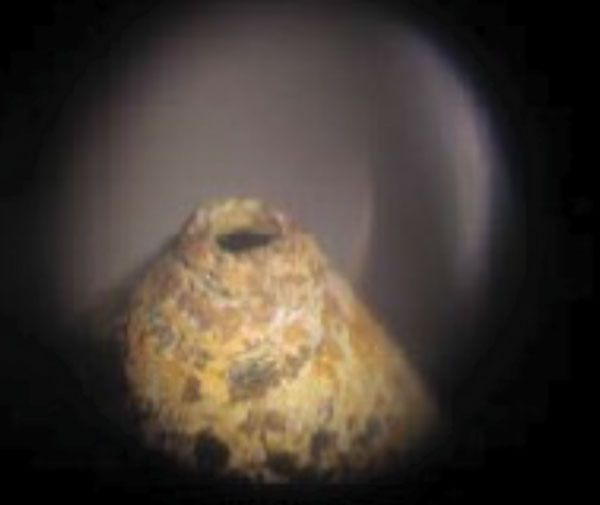
Figure 3: Skimmer cone with oxide buildup.
Delicate Skimmer Cone Damaged in an Attempt to Clear Orifice with Metal Wire (Figure 4)
This cone is now functionally unusable. Many skimmer cones have very thin walls with sharp edges. Any attempt to force a probe (metal, wood, or plastic) through this delicate orifice may alter the cone dimensions outside of the manufacturer's specifications.
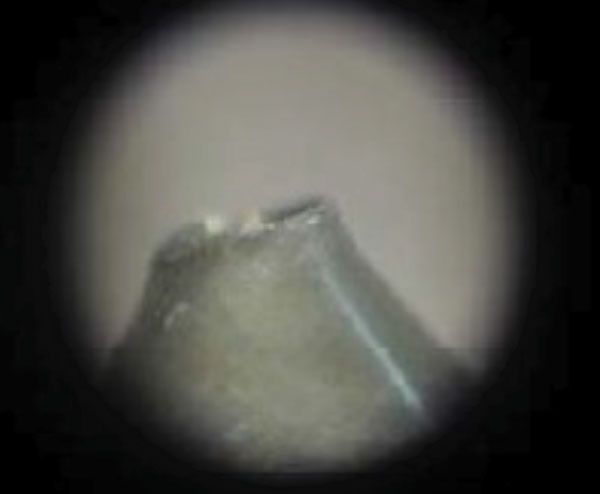
Figure 4: Damaged skimmer cone from attempting to clean with metal wire.
Skimmer Cone with a Simple Salt Buildup (Figure 5)
Sonicating in deionized H2O or dilute HNO3 (<1%), after soaking in metal cleaner, can usually clean these cones effectively. Dry according to previous instructions.

Figure 5: Skimmer cone with a simple salt build up.
Cleaning Cones Using Acid-Detergent Cleaning Method
Using the cone fixture, it is possible to efficiently clean the cone's analytical zone without degrading the rest of the cone unnecessarily. This is particularly useful for Pt-tipped cones and cones with exposed Cu bases. The cone's tip is inverted into fixture, as shown in Figure 6. However, more exotic and functional fixtures would be advisable.
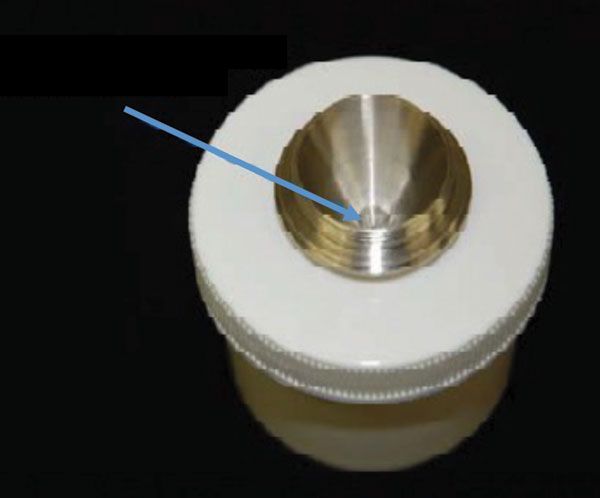
Figure 6: Soaking the tip of a cone in the cone fixture. Arrow shows that only the tip of the cone is in contact with the cleaning solution.
The fixture can then be filled with metal cleaner, nitric acid, or a cleaning solution of choice, and either soaked or sonicated as desired (Figure 7). Using this method, HNO3 concentrations as high as 10% can be used to clean Pt cone tips without damaging the Ni or Cu base. When cleaning Ni cones, it is advisable to limit the nitric concentration to 2%.
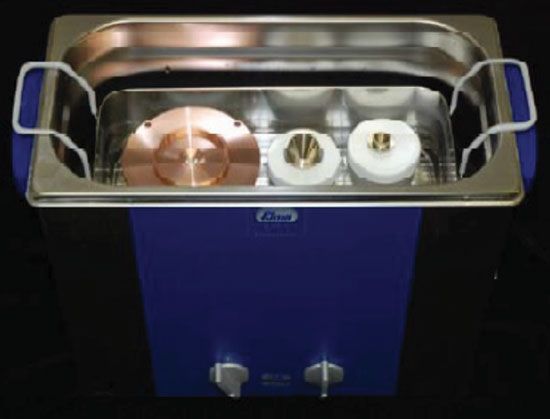
Figure 7: Cones can be cleaned in the fixture with a cleaning solution of choice and sonicated if desired.
Note: Nickel or Pt-tipped Ni cones can be soaked or sonicated directly in a metal cleaner solution. Although this is considered perfectly acceptable, it is strongly suggested to not place Cu-based cones (Pt-tipped Cu, Ni-tipped Cu) directly into metal cleaner or acid, as this will shorten the cone's lifetime.
Mechanical Cleaning Method– Sampler Cone
It is always recommended to pre-soak cones in metal cleaner before manually cleaning them (see section on aggressive cleaning). After creating a light paste with fine alumina powder, polish the cone tip using a felt pad or a synthetic, lint-free cloth, as demonstrated in Figure 8. Though the felt pad is gentle, do not apply excessive pressure directly on the tip of the cone. The objective is to remove buildup without changing the geometry of the cone tip.
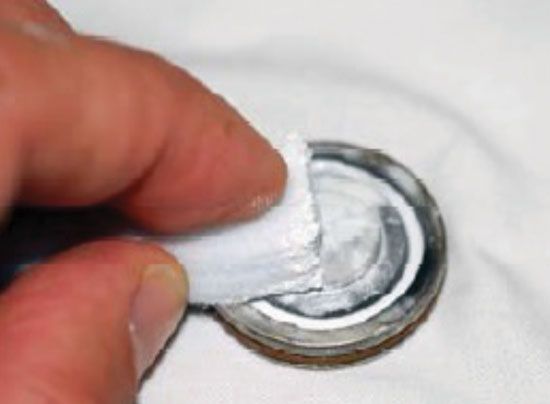
Figure 8: Fine alumina powder being used to manually polish a cone tip.
A cotton swab is also very effective at cleaning the inside (concave side) of the cone. By using the same alumina paste, it is possible to clean close to the orifice. By creating a point at the tip of the cotton swab the residue can be cleaned from the inside edge of the orifice (Figure 9).

Figure 9: Showing the use of the tip of a cotton swab to clean residue from the inside edge of a cone orifice.
For optimal cleaning of the cone orifice, diamond paste can also be used with a foam-tipped cleaning stick (Figure 10). These sticks simplify the effective cleaning of the most important region of the cone's analytical zone.
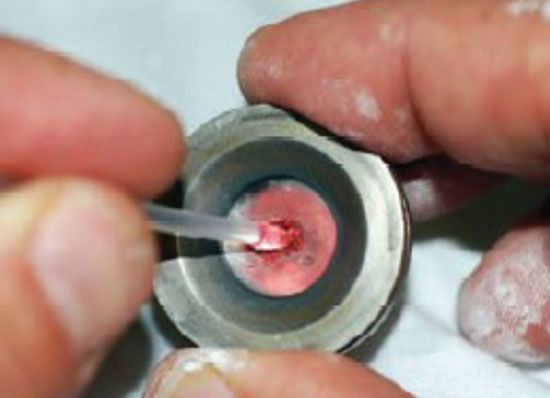
Figure 10: Diamond paste can also be used with a foam-tipped cleaning stick to clean the inside of a cone.
Mechanical Cleaning Method– Skimmer Cone
The same cleaning procedures can be applied to clean the skimmer cone using fine alumina powder, with a felt pad or cotton cloth for the outside of the cone and a cotton swab for the inside. However, do not apply excessive pressure directly on the tip of the cone, because certain skimmer cones are particularly prone to damage due to their thin walls and sharp edges. In addition, for optimal cleaning of the skimmer cone orifice, diamond paste and a foam-tipped cleaning stick is highly recommended. As a reminder, do not use aggressive or mechanical cleaning techniques, unless absolutely necessary.
Platinum Cone Refurbishing
Users of our Pt cones may take advantage of a professional refurbishing and reclaiming program (5). Whether cones have baked-on refractories, were accidently dropped, or slightly degraded from use, they can often be repaired to the original manufacturer's specification. Depending on their design, this process can be repeated once, or several times, significantly extending the lifetime of the cone. If a cone is not recoverable, the Pt can be reclaimed. Specific examples are shown in the figures, such as a Pt cone damaged from mishandling (Figure 11). Because the metal in this case is in good condition, neither annealed nor chemically degraded, this cone can easily be refurbished.
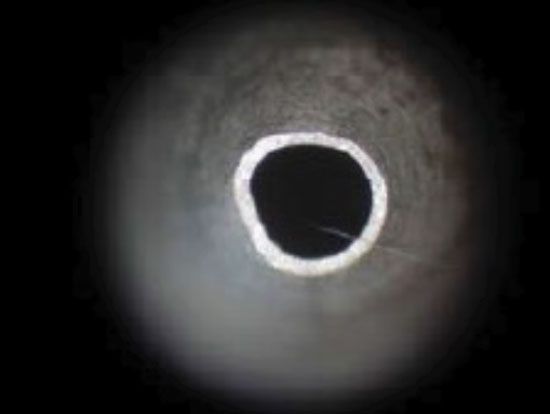
Figure 11: A platinum cone that can be refurbished.
A Pt cone chemically degraded beyond repair is shown in Figure 12. In this example, the cone has been made brittle and porous. Unfortunately, it is not possible to refurbish this cone, but it is ready for Pt reclamation.
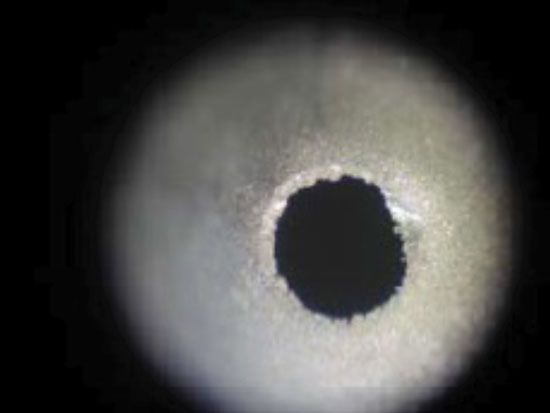
Figure 12: This platinum cone is ready for reclamation.
Figure 13 shows a damaged Pt cone, while Figure 14 shows the same cone professionally refurbished.
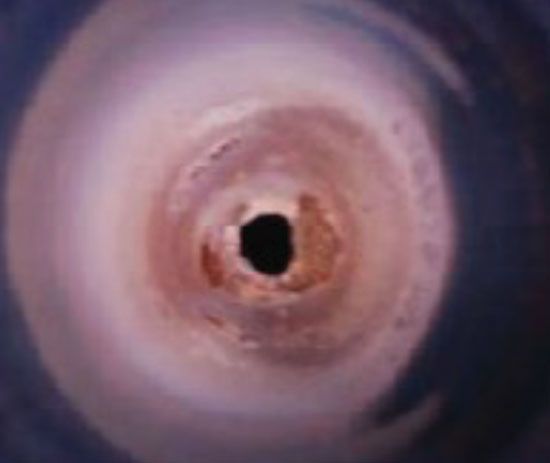
Figure 13: A damaged platinum cone.
Final Thoughts
When carrying out elemental determinations by ICP-MS, particularly in samples with high levels of matrix components, it is extremely important that the instrumentation be kept in good working order to maximize performance and productivity. For that reason, routine maintenance is absolutely essential in ICP-MS, especially of the sample introduction system and interface region, where the sampler and skimmer cone are essential components of the instruments performance capabilities. The art of cone cleaning has evolved over the 30 years that this author has been part of the ICP-MS community. There are no specific reference sources that can be cited for the information described here, as most of this information was gained anecdotally and through personal experimentation. Hopefully, the material presented in this article will help not only novice ICP-MS users, but also experienced users who may not have fully recognized the importance of cone cleanliness and maintenance.
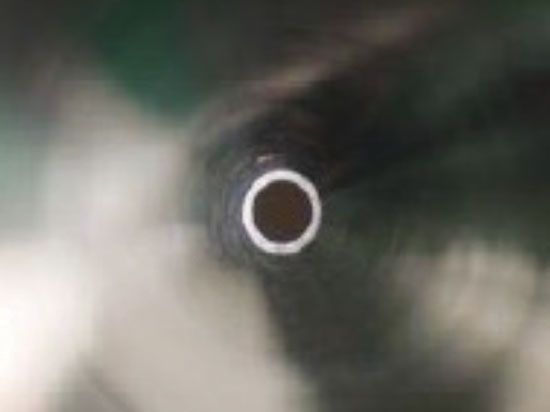
Figure 14: The damaged cone from Figure 13 after being professionally refurbished.
Acknowledgements
The author would like to acknowledge scientists and engineers at Agilent Technologies, PerkinElmer, and Thermo Fisher, who have been responsible for some of the knowledge and information described in this article. He would also like to thank Dr. Tom Rettburg of VHG Labs and Robert Thomas, the editor of this column, for assisting in the drafting and editing of this article.
References
(1) R.S. Houk, V.A. Fassel, and H.J. Svec, Dyn. Mass Spectrom. 6, 234 (1981).
(2) D.J. Douglas and J.B. French, Spectrochim. Acta 41B(3), 197 (1986).
(3) Cone Care and Maintenance, Spectron Inc. Application Note, https://spectronus.com/assets/product_documents/Cone_Cleaning_Final_909.pdf
(4) Metal cleaner Product Guide, Alcanox website: https://alconox.com/metal cleaner/
(5) Cone Refurbishing and Reclamation Program, Spectron Inc. Website, https://spectronus.com/assets/product_documents/SPECTRON_-_160816_Cust_Reclaiam_Pricing.pdf
Lawrence Neufeld

Lawrence Neufeld joined VG Elemental in 1988 as the second US-based Field Engineer for ICP-MS, soon after leaving his Research Associate position with the Department of Biochemistry at Stony Brook University. Neufeld became the Accessories Specialist for North America in the early 1990s, supporting hyphenated techniques (LA-ICP-MS, ETV-ICP-MS, and MD-ICP-MS). He left VG/Thermo Fisher as a Senior Product Engineer in 2000 to join VHG Labs (now part of LGC Standards) as Technical Director, before being recruited by New Wave Research as Product Manager of their Laser Ablation group. Since 2006, Neufeld has been President and CEO of Spectron, Inc., a manufacturer of ICP-MS interface cones for both quadrupole and sector systems worldwide.
Robert Thomas

Robert Thomas the column editor for "Atomic Perspectives," is the principal of Scientific Solutions, a consulting company that serves the application and writing needs of the trace element user community. He has worked in the field of atomic and mass spectroscopy for more than 40 years and has written almost 100 technical publications including a 15-part tutorial series on ICP-MS. He recently completed his fourth textbook, entitled Measuring Elemental Impurities in Pharmaceuticals: A Practical Guide. He has an advanced degree in analytical chemistry from the University of Wales, UK, and is also a Fellow of the Royal Society of Chemistry (FRSC) and a Chartered Chemist (CChem).
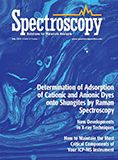
Applications of Micro X-Ray Fluorescence Spectroscopy in Food and Agricultural Products
January 25th 2025In recent years, advances in X-ray optics and detectors have enabled the commercialization of laboratory μXRF spectrometers with spot sizes of ~3 to 30 μm that are suitable for routine imaging of element localization, which was previously only available with scanning electron microscopy (SEM-EDS). This new technique opens a variety of new μXRF applications in the food and agricultural sciences, which have the potential to provide researchers with valuable data that can enhance food safety, improve product consistency, and refine our understanding of the mechanisms of elemental uptake and homeostasis in agricultural crops. This month’s column takes a more detailed look at some of those application areas.